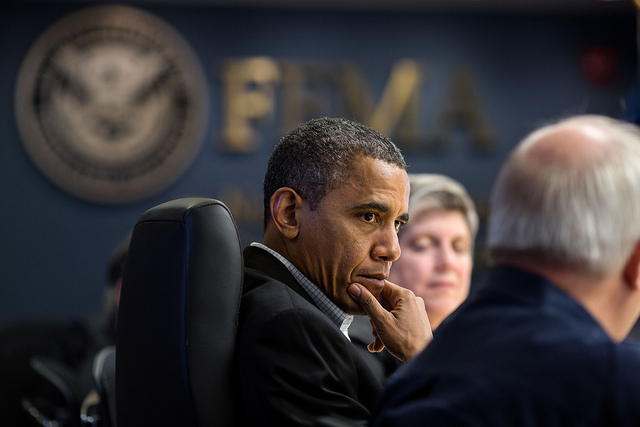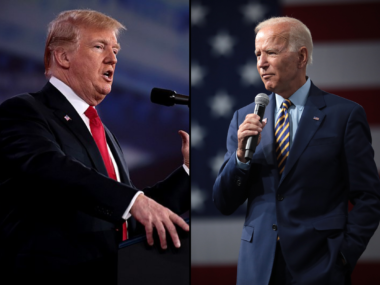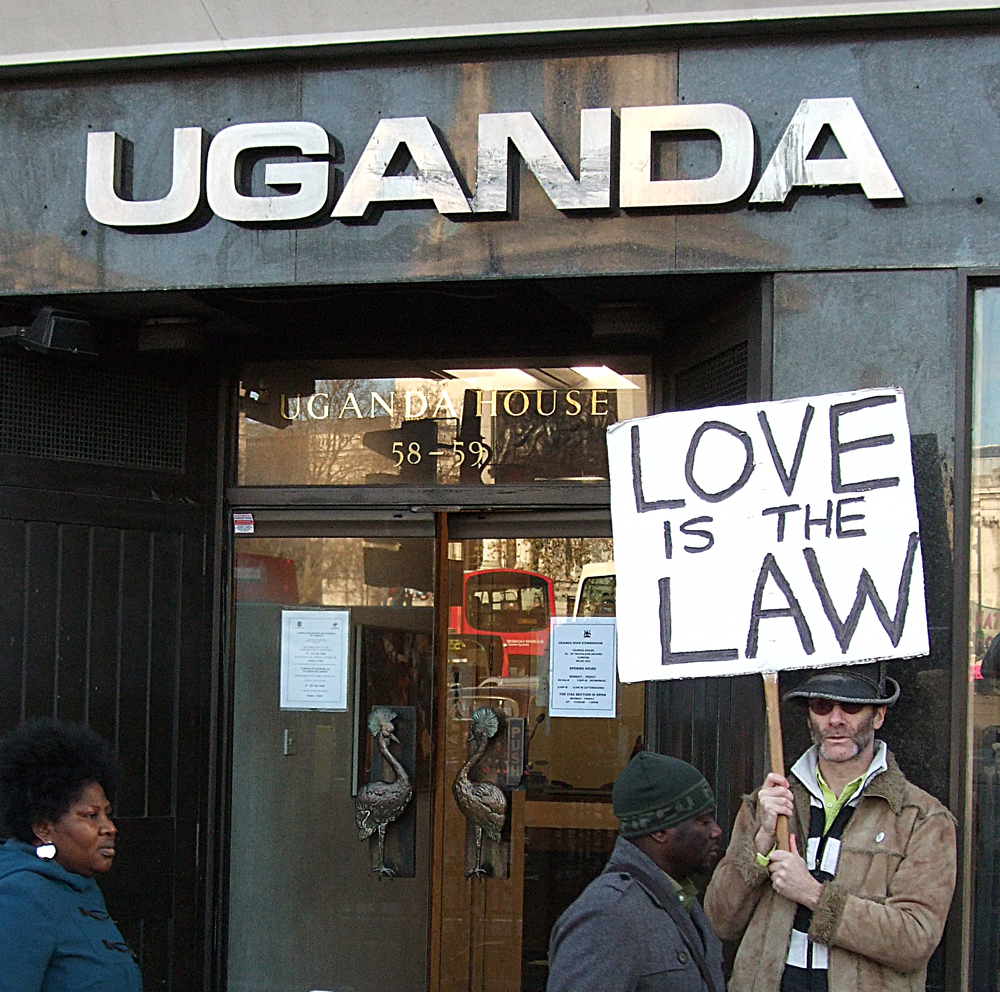By Erica D. Borghard and Jack Snyder

Syria’s recent chemical weapons activity has raised the specter of audience costs for President Obama. Audience costs — the domestic price political leaders pay for failing to follow through on their threats — are said to be the key mechanism explaining why democracies prevail in international crisis bargaining. Because democratic leaders can go public with threats that effectively tie their hands, they can more credibly communicate their resolve and force target states to back down. But some (including yours truly) have questioned whether audience costs exist at all and, if so, how much they actually matter.
On August 20 of this year, Obama held a press conference during which he issued the following threat to Bashar al-Assad’s regime:
“We cannot have a situation in which chemical or biological weapons are falling into the hands of the wrong people. We have been very clear to the Assad regime but also to other players on the ground that a red line for us is, we start seeing a whole bunch of chemical weapons moving around or being utilized. That would change my calculus. That would change my equation… We are monitoring that situation very carefully, we have put together a range of contingency plans, we have communicated in no uncertain terms with every player in the region that that’s a red line for us, and that there would be enormous consequences if we start seeing movement on the chemical weapons front, or the use of chemical weapons. That would change my calculations significantly” [emphasis added].
Yet on December 3, when the media began to report troubling movement of Syria’s chemical weapons and the preparation of some of those stockpiles for battlefield deployment — both of which would activate Obama’s August threat — the President responded by issuing a new threat that sidestepped his previous commitment to respond with “enormous consequences”. The movement of chemical weapons and talk of “red lines” were mysteriously absent from Obama’s new threat:
“And today, I want to make it absolutely clear to Assad and those under his command: The world is watching. The use of chemical weapons is and would be totally unacceptable. And if you make the tragic mistake of using these weapons, there will be consequences, and you will be held accountable” [emphasis added].
What does this shift suggest about the role of audience costs in international crisis bargaining? Following audience costs theory, we should expect to observe the following. First, Obama’s initial threat should have successfully deterred Assad from moving and prepping his chemical weapons. Second, pending the failure of Obama’s deterrent threat, the President should have followed through on his commitment to respond with “enormous consequences”. Third, given his failure to respond, Obama should be punished by the domestic public for inconsistency between his words and deeds. So, what do we actually see?
Events have played out off the equilibrium path predicted by audience costs theory. Obama’s initial threat did not deter Assad from moving and assembling his chemical weapons. This suggests a number of possibilities, all of which raise doubts about the role of audience costs: Assad didn’t get Obama’s message clearly; Assad received the message loud and clear, but doubted Obama’s resolve to follow through; or Assad received the message, but believed the domestic costs to his regime of backing down outweighed the costs of ignoring Obama’s threat.
Furthermore, rather than follow through on his threat to impose “enormous consequences” on the Assad regime for the movement and preparation of chemical weapons, Obama circumvented the terms of his first threat by issuing a second one that committed the President to respond to the use, rather than the movement, of chemical weapons. This second threat was buttressed by comments made by Secretary of Defense Leon Panetta and Secretary of State Hillary Clinton stressing that Obama was indeed committed to some type of action against Syria if it were to use chemical weapons.
But how did Obama so easily slip out of his initial commitment? By playing a game of semantics. According to the New York Times, “the White House says the president has not changed his position at all — it is all in the definition of the word ‘moving’.” Tommy Vietor, the spokesman for the National Security Council, said Thursday that ‘‘’moving around’ means proliferation,’ as in allowing extremist groups like Hezbollah, which has training camps near the weapons sites, to obtain the material.” This implies that, even if audience costs exist and leaders do in fact worry about them, their impact on international crisis bargaining is minimal because leaders can easily extricate themselves from commitments with some hand waving and word games.
Notably, both versions of the Obama threat failed to precisely stipulate what specific behaviors would trigger a US response, and what the contours of that response would look like. Secretary Clinton was even more adamant in stressing the fact that the US would not specify how it would respond to Assad’s use of chemical weapons: “I am not going to telegraph in any specifics what we would do in the event of credible evidence that the Assad regime has resorted to using chemical weapons against their own people. But suffice it to say, we are certainly planning to take action if that eventuality were to occur.”
Leaders’ threats typically build in wiggle room in this way. Their ambiguous threats put the opponent on notice, but they leave themselves an escape hatch. Leaders avoid rigidly locking in their future actions because such tight constraints are bad policy. As the New York Times reported last week, US officials are aware of these constraints: “‘We’re kind of boxed in,’ an administration official acknowledged… ‘There’s an issue of presidential credibility here,’ the official said. ‘But our options are quite limited.’” The administration recognizes that verbal inconsistency is awkward, but these costs pale in comparison to the risks of prematurely committing to fight yet another war in the Middle East. Recent reports have suggested that the US would need to deploy 75,000 ground troops to adequately secure Syria’s chemical weapons at a time when neither the President nor the domestic public finds the prospect of another ground operation in the Middle East palatable.
Some in the President’s domestic audience (notably, the New York Times) did indeed notice Obama’s inconsistency; an awareness which counts in favor of audience costs. However, the Times has been consistently hawkish on the Syria issue, generally adhering to an editorial policy that favors more pressure and leans toward military measures to resolve the Syria crisis. Would the newspaper have been so alert to audience costs if it did not have an already interventionist attitude?
Regardless, the American public has displayed a steady aversion to military involvement in Syria. Audience costs theory would predict that dovish publics would punish leaders for failing to follow through on their threats, even though they might agree with their leaders’ policy. While it is too early to infer whether Obama has paid significant domestic political costs for inconsistency, we anticipate that he won’t because history shows that policy substance is more important to the public than consistency.







4 comments
The audience costs literature appears to overlook the temporal variation in the magnitude of audience costs that a leader can generate to send a credible signal. Right before election, if any, the audience costs Obama can generate should be biggest. This implies that Assad’s aggressive action might have been deterred before the presidential election because Obama’s August statement carried audience costs large enough to make Assad believe that Obama’s public threat was credible. After election, however, Assad carried out the movement of chemical weapons probably because Obama’s threat is not credible any more after election and the potential public electoral punishment for Obama’s inconsistency should be minimal in this early period of the second term.
However, the fact that Obama may not be able to make a credible threat in this period (if one believes that the audience costs argument is true) does not necessarily mean that he will make less public threats against foreign adversaries in this early period after election. Ironically, when a leader makes a threat with large audience costs expecting the opponent to back down, the leader is also highly concerned about the potential costs of military escalation. In other words, when a leader is very sensitive to potential public electoral punishment, the leader can make a credible threat but at the same time the leader may not want to experience any serious military escalation because the outcome of military conflict is uncertain and the public is not willing to bear the high costs. For example, the U.S. public might have been quite reluctant to see any other costly military conflict under the harsh economic conditions, and this would be a bigger concern for Obama in the reelection period than Obama after reelection. This conjecture implies that U.S. president should be least constrained to make a military threat in the first half of the second term not only because reneging a public threat is not that costly in this period but also because the costs of potential military escalation would be perceived to be less costly (politically) in this period.
A military threat in the reelection period is a dangerous high-stake gamble, but it might be safer to gamble on after election.